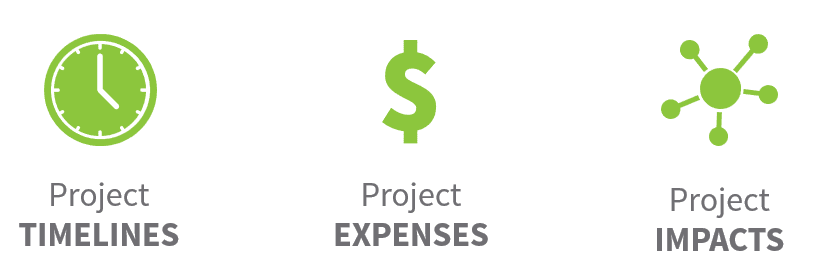How to Build a Proactive Funding Plan™: Offset Project Costs & Grow Your Business

Many of the businesses that Mentor Works meets have at least a general idea of the projects that they would like to complete over the next year or two—these businesses might be planning to attend a few trade shows, further develop software, or implement new production equipment, for example.
Despite their careful planning, however, many Canadian businesses miss out on the opportunity to receive government grants and loans that could offset their project costs.
We often see companies taking a reactive approach where, rather than planning for funding at the same time that they plan other aspects of projects, funding is an afterthought or a separate process. As a result, crucial projects may be delayed or scaled back due to insufficient financial planning—maybe the business is only able to install one new production line instead of two, or it must reduce the number of graduate student interns it can hire in its R&D lab. When projects are scaled back, the business never achieves all of the projects’ planned benefits, and growth is limited.
A Funding Strategy: Benefit from Canadian Government Grants
 The alternative to reactive financial planning is a proactive approach. Forward-thinking management and project teams understand the advantages of a well-planned funding strategy. These teams have a clear roadmap for their business strategy over the next 12-24 months, and possibly beyond. They also actively explore options to finance their activities—options that go beyond merely using internal cash flows.
The alternative to reactive financial planning is a proactive approach. Forward-thinking management and project teams understand the advantages of a well-planned funding strategy. These teams have a clear roadmap for their business strategy over the next 12-24 months, and possibly beyond. They also actively explore options to finance their activities—options that go beyond merely using internal cash flows.
This proactive approach ensures that funding is in place before projects begin and that businesses will complete projects on time and in their entirety, achieving all planned project benefits to support company growth.
Developing and realizing a Proactive Funding Plan™ can help businesses align projects with the right government funding to ensure project success. Proactive plans utilize management best practices to execute projects efficiently, while increasing a company’s chances of success in securing government funding to pay for project expenses.
Interested in learning more about the benefits of Proactive Funding Plans and how to build one? Download our free resource.
Key Elements of a Proactive Funding Plan
Mentor Works’ slide deck, How to Build a Proactive Funding Plan, gives businesses an in-depth explanation of proactive funding strategies and how these strategies relate to small business funding. Below is an overview of Proactive Funding Plans to help businesses understand the key elements and advantages of this type of strategy.
What Exactly Is a Proactive Funding Plan?
A Proactive Funding Plan identifies in writing your strategic goals over the next one to two years and pairs these goals with the government grants, loans, and tax incentives that are most likely to support financing for your upcoming projects.
Creating an accurate, effective Proactive Funding Plan involves three steps:
- Establish Projects and Priorities: Management drafts a written plan that identifies the company’s strategic direction over the next 12-24 months, as well as the major projects that will help satisfy growth targets.
- Set Major Timelines: Management and other stakeholders examine each of the priorities described in the written plan and establish start and end dates, in addition to major milestones and deliverables.
- Incorporate Government Impacts: For each of the company’s projects, management identifies impacts or outcomes that align with the government’s priorities for various funding programs (job creation, increased exports, reduced emissions, etc.), so that the business can make a competitive case for support through government grants and loans.

How Can a Proactive Funding Plan Fast-Track My Company’s Growth?
Once you have established projects and priorities and set major timelines, you will have a better understanding of your organization’s financial needs for projects over the next two years, and you will be able to recognize if a funding gap exists.
Funding gaps occur when businesses identify several projects but do not have the internal capital to support them all. If a company does not address its funding gap, some projects or aspects of projects may be cut from the strategic plan, inhibiting growth. A Proactive Funding Plan helps avoid this scenario.
When there is a funding gap, applying for Canadian government funding becomes essential to moving your projects forward and accelerating your business growth.
The third phase in the Proactive Funding Plan, the incorporation of government impacts, is essential to securing additional funds. Knowing the government’s priorities and how they align with your planned projects will allow you to make a competitive case for securing business grants and loans from the government and improve your chances of funding success.
Create and Realize Your Own Proactive Funding Plan
Canadian small business managers and executives can learn more about building a Proactive Funding Plan and applying for Canadian government grants by downloading Mentor Works’ slide deck, How to Build a Proactive Funding Plan.
This free resource gives you a detailed, step-by-step plan on how to develop a proactive funding approach. It explains how strategic planning can lead to greater return on your investment in projects, ultimately contributing to your company’s long-term success.
Download the How to Build a Proactive Funding Plan slide deck.

